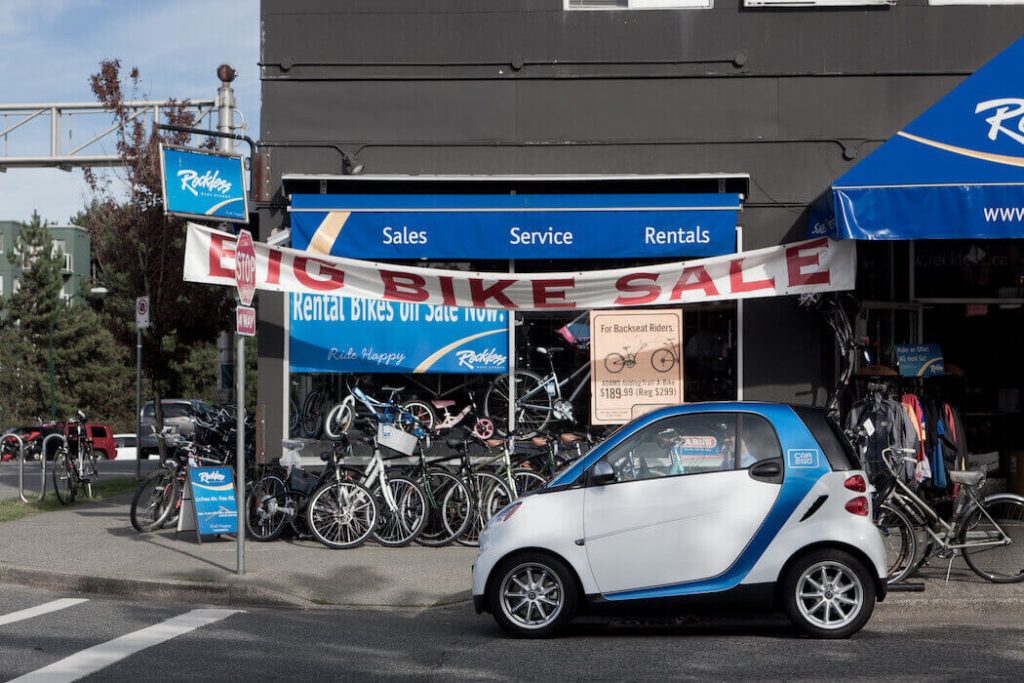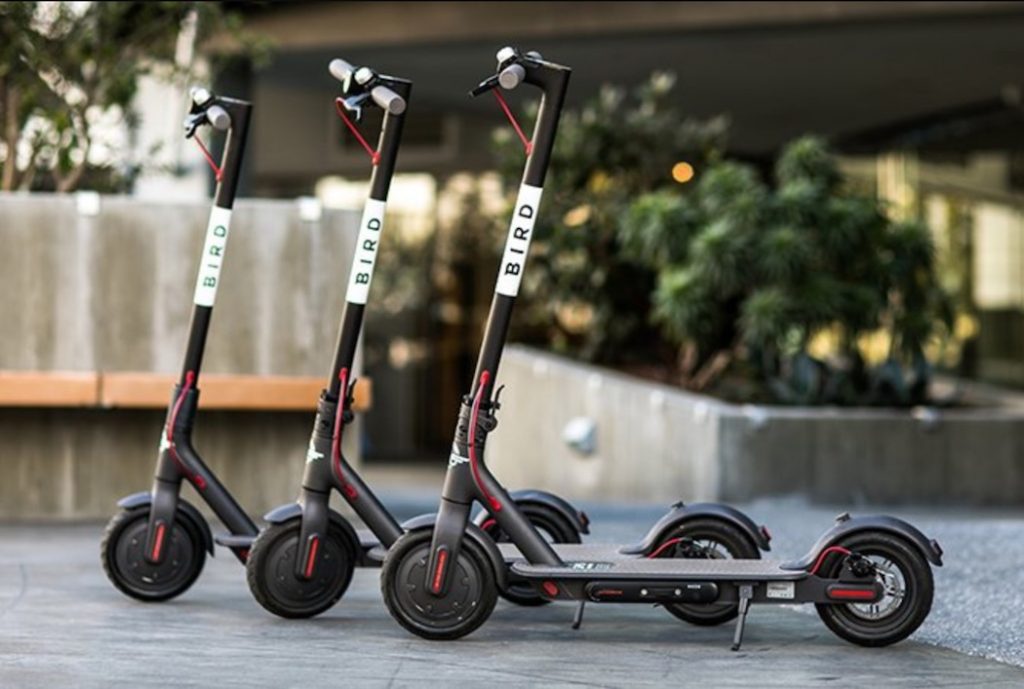Canada’s mobility market closed out 2019 on a tumultuous note. The departure of ShareNow (Car2Go) from North America has left consumers scrambling for transit alternatives.
Car2Go’s exit is part of a larger shift facing the mobility market, and the public reaction speaks to a change in the way Canadians view their mobility options more broadly. With new micro-mobility, car sharing, and ride hailing services taking Canada by storm, the traditional car ownership model is changing to meet their transportation needs.
While this shift will only accelerate in 2020 as the number of mobility solutions expands, there are new layers of uncertainty making the landscape more difficult to navigate and will cause noticeable changes. Here’s a look at what to expect in Canada as we kick off the new decade:
Fleet-based car sharing will continue to decline
Car2Go’s exit from Canada (and GM’s Maven from elsewhere in North America), reflects a fundamental flaw in the model that fleet-based car sharing services operate within.
Other models will continue to thrive, especially peer-to-peer (P2P) alternatives.
They require significant upfront investments to acquire, maintain, and park their vehicles across a city. The number of cars they can operate is severely restricted and parking has become a headache for both users and municipal regulators—as was the cause of Car2Go’s departure from Toronto in 2018.
In 2020, I anticipate other fleet-based car sharing services will stagnate in growth and ultimately decline, exacerbated by increased competition from ride hailing platforms.
Yet this doesn’t mean car sharing itself is doomed – quite the contrary. Other models will continue to thrive, especially peer-to-peer (P2P) alternatives like Turo, which is now driving most of the growth of the sector with 90 percent growth in trips taken in Canada in 2019 alone.
In a P2P model, car owners put their own cars onto a platform and allow other users to book them for periods of time. Think of Airbnb, but for cars. P2P car sharing platforms, therefore, allow the car owners to generate revenue while drivers could have access to considerably more, and better, cars than they would through a fleet-based model. With Canadian’s cars sitting idle for 96 percent of the time, P2P car sharing is one way to put existing cars to better use.
OEMs shifting to cater to a new type of buyer
Auto sales had a year-over-year decline by 3.6 percent in 2019. There’s a range of factors contributing to this: higher prices for vehicles, historic levels of auto debt amongst younger buyers, and the proliferation of technology-enabled mobility alternatives.
In particular, ride hailing and car sharing have seen impressive growth across Canadian cities, often at the expense of car ownership. Their extreme convenience has, in many ways, made them a preferred option for urbanites needing shorter distance trips within cities.
With that said, car ownership in Canada remains strong and is still an integral part of life for many Canadians. Rather than compete, there are opportunities for increased collaboration between the sharing model and traditional original equipment manufacturers (OEMs) that we are already seeing come to life.

To address the challenges they face, we’ll see OEMs shifting their practices to cater to a new type of car owner. For example, we’ll see them increasingly look to new forms of partnerships with car sharing and other industry disruptors, leveraging data in their sales tactics, and providing personalized and digital services to customers. Manufacturers have also shifted focus to developing new ownership models based on subscriptions and preparing fleets of self-driving cars enabled by AI and 5G.
Ride hailing growing but facing increased backlash
While the number of Canadian users on ride hailing platforms is expected to reach 7.8 million this year, the major players in this space, Uber and Lyft, will face further scrutiny.
Almost daily, new data and reports emerge putting these companies in the hot seat. For example, a recent report from the Ryerson Urban Analytics Institute found that ride hailing has dramatically increased traffic congestion in the city of Toronto. Uber also faces highly publicized cases in Canada’s Supreme Court that would set precedents for the Canadian ride hailing industry.
A potential souring of public opinion, coupled with price increases as Lyft and Uber (both newly public companies) seek to achieve profitability, could force users to look for alternative solutions.
E-scooters offering a new alternative
The newest micro-mobility solution in Canada, electric scooters, will gain momentum in 2020. They’re already available in several cities, including Montreal, Calgary, and Edmonton, and with Ontario’s e-scooter pilot project having launched on January 1, they’re poised to dramatically reshape the mobility ecosystem.
Implemented and regulated properly, e-scooters can be an effective solution for ‘last mile’ transit—helping commuters take short-distance trips, whether from a subway stop to home or a trip to the grocery store. But with the much-discussed ‘scooter-pocalypse’ there is a looming possibility that public spaces may be at risk with scooters strewn about on sidewalks and crashing into pedestrians.

Brands like Bird and Lime will need to overcome a reputation problem they already struggle with, having not handled these situations in other cities properly. In Montreal, these have resulted in injuries for some users and complaints about scooter dumping. Scooter-sharing companies will also have to prove their financial viability as concerns arise around their underlying unit economics.
An urban-rural divide on mobility
While the number of mobility solutions seemingly grows exponentially in urban centres, this hasn’t been the case for rural communities. The density and geography of rural towns make it difficult to implement public transit systems, posing a major barrier for these communities to access critical services and to commute within towns or to larger urban centres.
Private fleet-based mobility platforms have largely failed at addressing the mobility needs of rural communities. Their product experience and business model is entirely based on scale, which rural communities simply can’t offer.
In contrast, The peer-to-peer model is showing promise addressing challenges facing the rural mobility landscape. For example, the town of Innisfil launched a project in partnership with Uber that has been hugely successful and continues to this day.
RELATED: Turo, TradeRev headline first 2020 AutoTech meetup on Feb 6th
These types of partnerships are able to overcome barriers of supply while also helping these communities generate additional income through the sharing economy. Communities will need to develop innovative partnerships that specifically cater to rural’s unique needs. P2P car sharing can play a major role in offering accessible mobility alternatives to rural communities. Turo, for example, is already available in over 400 cities across Canada, while other mobility players operate in less than a dozen cities.
On February 6, I, along with Mark Endras of TradeRev and Meagan Simpson of BetaKit, will be discussing these issues, the future of auto ownership, and urban mobility technology in more depth at the first AutoTech community meetup of 2020. If you’d like to attend, please get your ticket here.
Image source Unsplash

